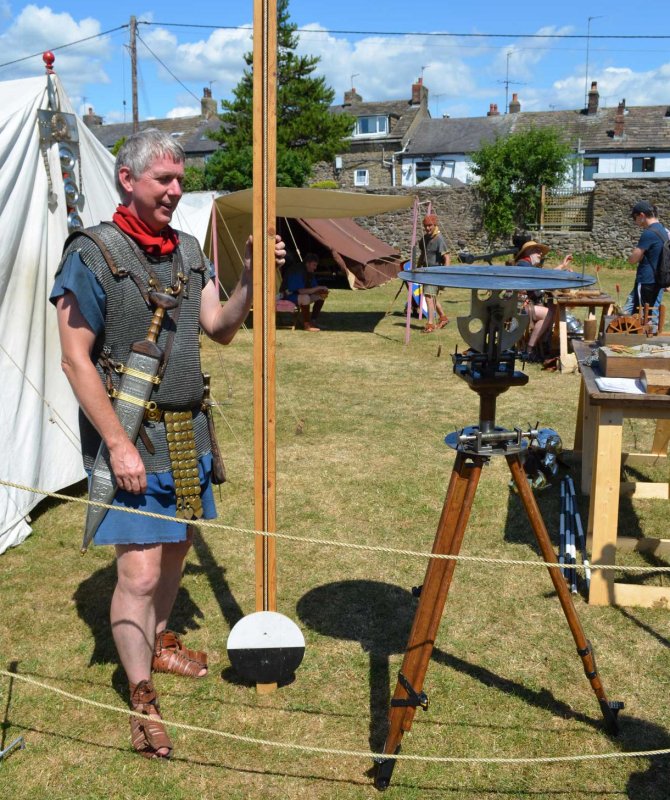On our summer trips we like to include a wide range of periods from the Prehistoric to the industrial, and if possible, a live excavation. We pretty much achieved it with this one, only missing industrial (which we’ll have to make up next time). First up the Roman fort at Ribchester is being excavated by students from UCLAN, headed by Dr Duncan Sayer. His tour of the site was both enlightening and entertaining (particularly having to complete with singing archaeologists and everlasting church bell ring practice). He introduced us firstly, to the granaries which had been excavated in the 19th century. Unusual for Britain, Ribchester boasts both double and single granaries (it’s usually one or the other).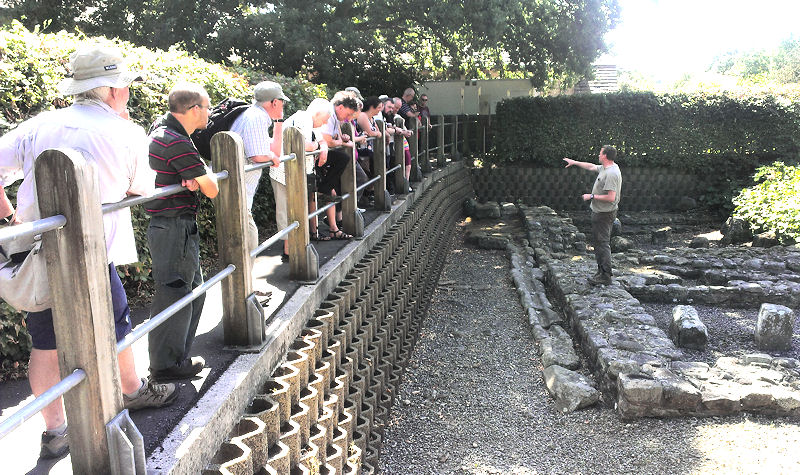 He also explained that in the later part of the Roman occupation, their use change from grain storage to meeting halls for the troupes when connection with Rome was diminished. We were then led to the current excavation where we were firstly shown the work on the western gateway which had revealed evidence of the guard tower and fort ditch. Excavations here had also revealed an earlier guard tower and turf embankment showing that the fort had been expanded westward when the fort’s position was consolidated in the later part of the 2nd century. Further inside were the remains of an internal road and where previous excavations had cut through it, you could see the many times it had been relaid.
He also explained that in the later part of the Roman occupation, their use change from grain storage to meeting halls for the troupes when connection with Rome was diminished. We were then led to the current excavation where we were firstly shown the work on the western gateway which had revealed evidence of the guard tower and fort ditch. Excavations here had also revealed an earlier guard tower and turf embankment showing that the fort had been expanded westward when the fort’s position was consolidated in the later part of the 2nd century. Further inside were the remains of an internal road and where previous excavations had cut through it, you could see the many times it had been relaid.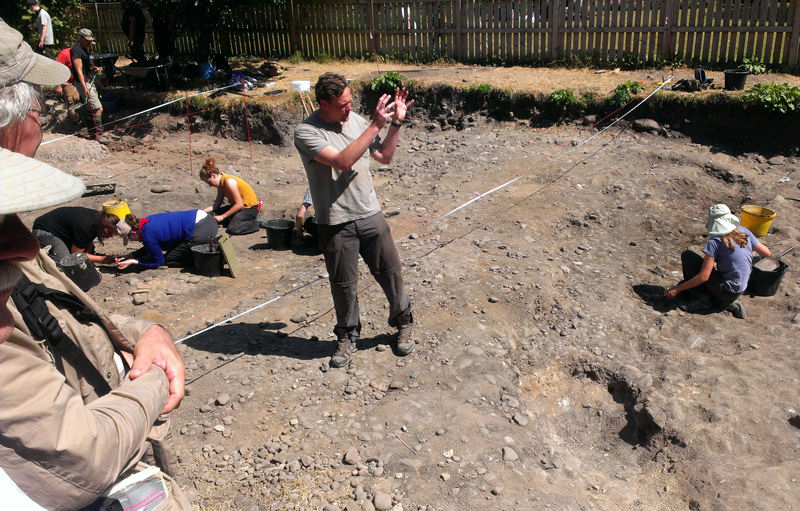 Inside the this road you would normally expect a barrack block but at Ribchester this area had clear signs of metalworking. Duncan explained that the evidence produced from the fort, showed continuous occupation from the earliest days of the occupation, right up to and beyond the end of the Roman period. Excavations for this finish next week but it looks like they have along way to go before this site is fully understood.
Inside the this road you would normally expect a barrack block but at Ribchester this area had clear signs of metalworking. Duncan explained that the evidence produced from the fort, showed continuous occupation from the earliest days of the occupation, right up to and beyond the end of the Roman period. Excavations for this finish next week but it looks like they have along way to go before this site is fully understood.
After the talk there was an option for a visit to the museum which included a Roman cavalry and infantry demonstration on the back field (not everybody took this up – some visited the church, others just chatted with Duncan).
After reassembling on the car park, we then made our way to Whalley Abbey for lunch (here we lost Darren and Fiona at this point as they opted to watch the rest of the re-enactments).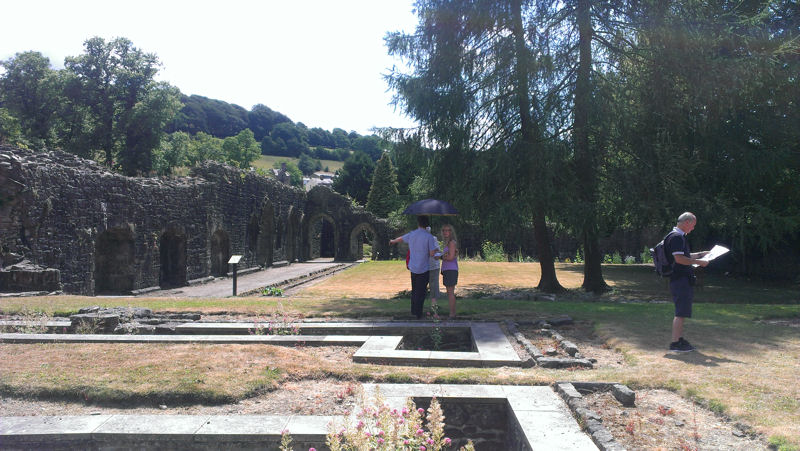 Only footings of the huge Abbey church survive at Whalley but there are many upstanding remains of the Abbey buildings including the refectory which has more recently been re-roofed.
Only footings of the huge Abbey church survive at Whalley but there are many upstanding remains of the Abbey buildings including the refectory which has more recently been re-roofed.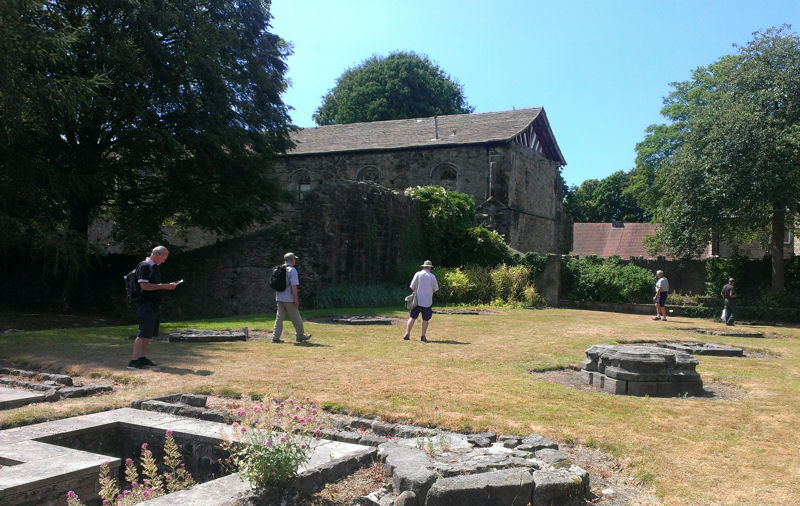
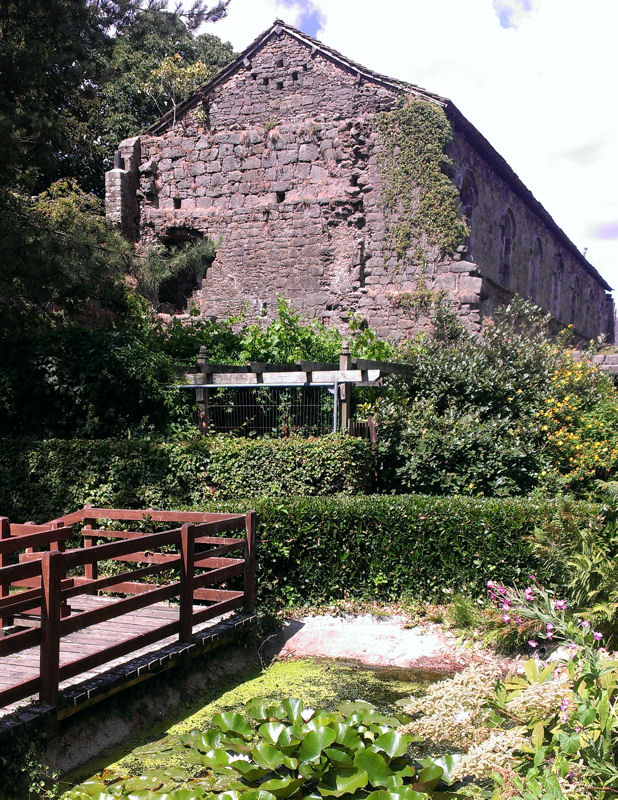
Pleasant gardens overlooking the River Calder make for a very enjoyable visit.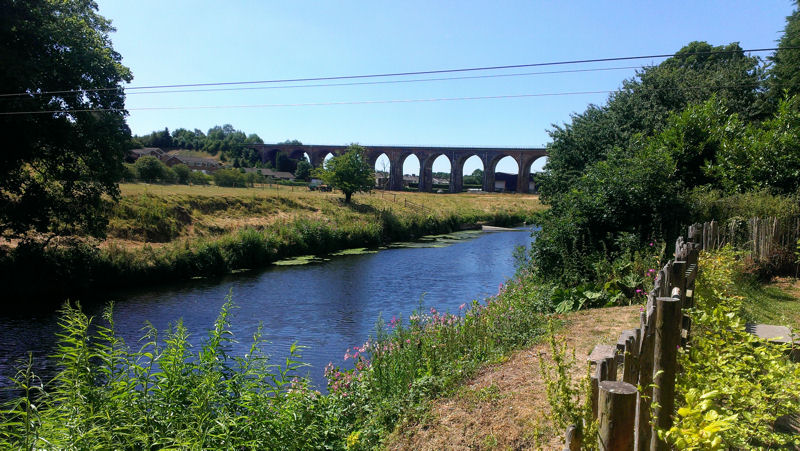 Adjacent to the Abbey is the Parish Church which has three medieval crosses in it’s grounds and a Roman altar stone inside.
Adjacent to the Abbey is the Parish Church which has three medieval crosses in it’s grounds and a Roman altar stone inside. 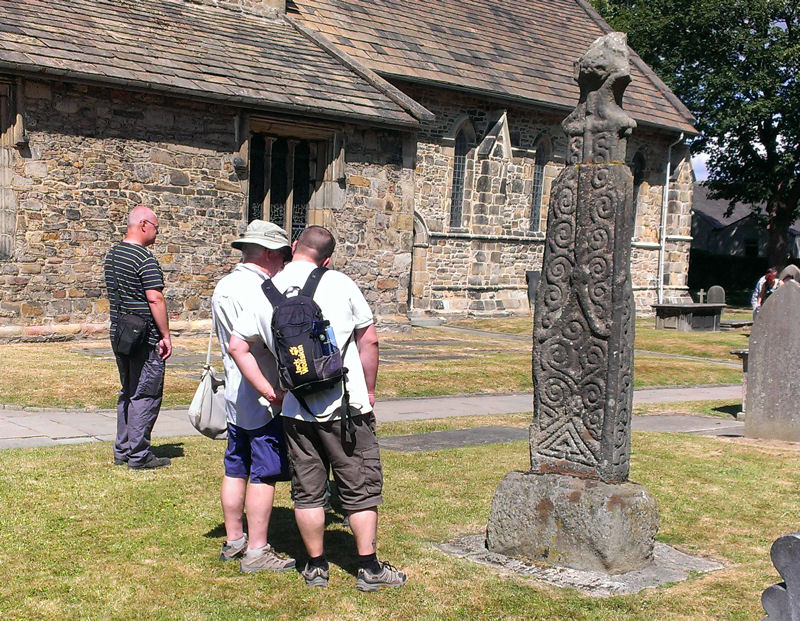 The crosses are generally considered to be pre-conquest but Ben Edwards in his Vikings in the NW book, suggest that they could even be late 11th century. Certainly Lee was keen to draw comparisons with the so-called Headless Cross at Grimeford Village which he has be currently investigating.
The crosses are generally considered to be pre-conquest but Ben Edwards in his Vikings in the NW book, suggest that they could even be late 11th century. Certainly Lee was keen to draw comparisons with the so-called Headless Cross at Grimeford Village which he has be currently investigating.
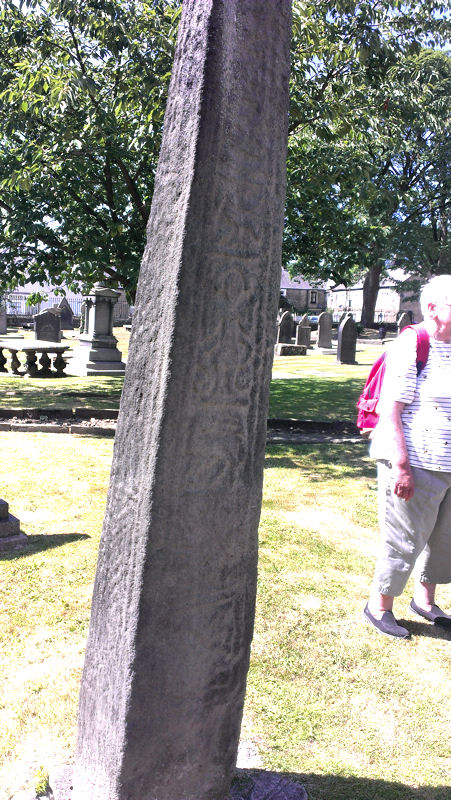 Our next site, Bleasdale Circle was about 35 mins away (Eileen and Simon – Ashley’s mum and dad, Tracey and Lily opted out at this point). With Sat-nav’s to the ready, we all made our way around the southern hills of the Trough of Bowland, till eventually we ended up on the car par in front of the church at Bleasdale. From there it was a short walk up the lane before dipping into the field, and though another field before arriving at this tree-covered site.
Our next site, Bleasdale Circle was about 35 mins away (Eileen and Simon – Ashley’s mum and dad, Tracey and Lily opted out at this point). With Sat-nav’s to the ready, we all made our way around the southern hills of the Trough of Bowland, till eventually we ended up on the car par in front of the church at Bleasdale. From there it was a short walk up the lane before dipping into the field, and though another field before arriving at this tree-covered site.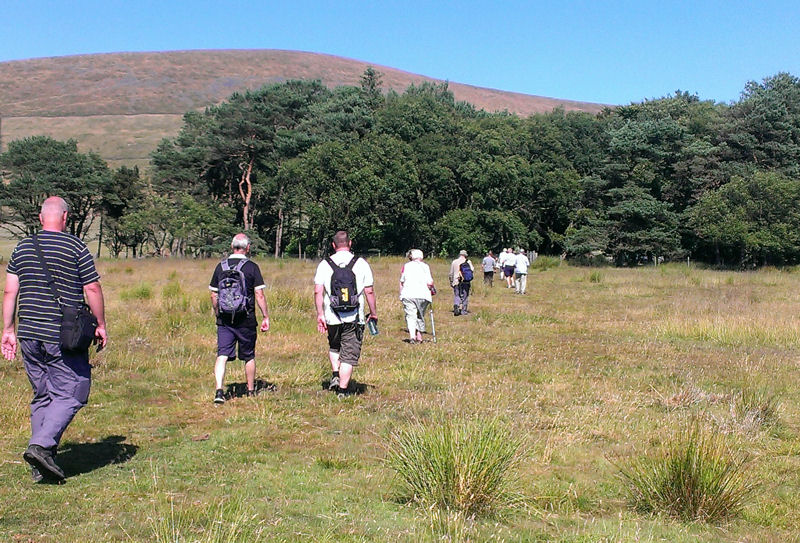 It is referred to as an urnfield on scheduled monument listing (cremation urns were found in excavations in the 19th century). Apparently urnfields are generally only found in Yorkshire so to find one his far west is quite unusual. This site therefore has some importance, hence the scheduling. In excavations in the 1930’s the inner circular ditch was dug out and short concrete pillars installed were post-holes had been detected. Our searches for the outer ring proved unsuccessful and trees, particularly fallen ones, made it difficult to get a good picture of he site.
It is referred to as an urnfield on scheduled monument listing (cremation urns were found in excavations in the 19th century). Apparently urnfields are generally only found in Yorkshire so to find one his far west is quite unusual. This site therefore has some importance, hence the scheduling. In excavations in the 1930’s the inner circular ditch was dug out and short concrete pillars installed were post-holes had been detected. Our searches for the outer ring proved unsuccessful and trees, particularly fallen ones, made it difficult to get a good picture of he site.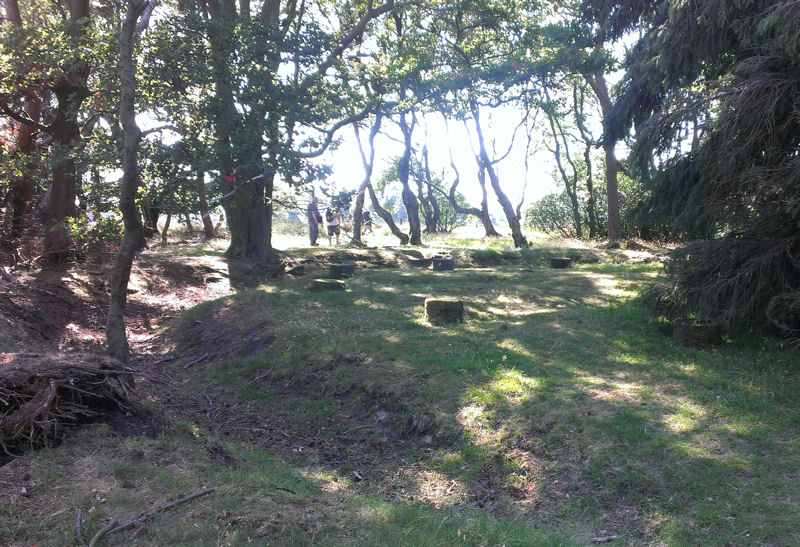 However it’s location on the fell is quite dramatic – seemingly to be in a huge amphitheater with the surrounding hills, and with tremendous views over the west Lancashire plain.
However it’s location on the fell is quite dramatic – seemingly to be in a huge amphitheater with the surrounding hills, and with tremendous views over the west Lancashire plain.
We had a good turn out for this trip (18 at the start) which everybody body seemed to enjoy helped no doubt by the fine weather.

